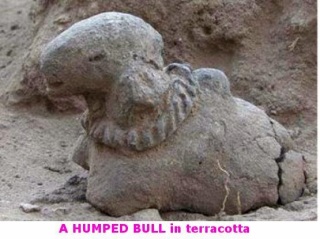
பழனிக்கு அருகில் தென்மேற்கில் இருக்கும் பொருந்தல் என்ற கிராமத்தில் 2009ஆம் ஆண்டு மேற்கொள்ளப்பட்ட அகழ்வாய்வின்போது பெருங்கற்காலத்தைச் சேர்ந்த நெல்லும், தமிழ் பிராமி பொறிப்பு கொண்ட புரிமனையும், சவஅடக்கம் செய்யும் தாழிகள் போன்றவை கண்டுடெடுக்கப் பட்டுள்ளன. இவை கி.மு 490 ஆம் ஆண்டைச் சேர்ந்தவை என்ற அறிவியல் ஆய்வின் முடிவால் தெரியவந்திருக்கிறது.
கண் டெடுக்கப்பட்டுள்ள இந்த சவஅடக்கம் செய்யப்பட்ட தாழிகள் பல அரிய பொருள்களைத் தந்துள்ளன. இரண்டு கிலோ நெல் உள்ளே வைக்கப்பட்டிருந்த நான்கு கால் கொண்ட ஜாடி ஒன்றும், வா-அய்-ரா என்ற தமிழ் பிராமி எழுத்துகள் பொறிக்கப்பட்ட இரண்டு மோதிர தாங்கிகள் ஆகியவை இதில் அடக்கம். அமெரிக்காவின் பிடா பகுத் தாய்வு நிறுவனத்தால் இந்த நெல் கி.மு.490 காலத்தைச் சேர்ந்தது என அக்சலேட்டர் மாஸ் ஸ்பெக்ட்ரோமெட்ரி முறையில் கணக்கிடப்பட்டுள்ளது. ஆய்வு தரும் முடிவுகள், அசோகருக்கு முந்தைய காலத்திய பண்டைய தமிழகத்தில் தமிழ் பிராமி எழுத்துகள் பயன்படுத்தப் பட்டுள்ளன. கி.மு. 500 காலத்தில் தமிழகத்தில் நெல் சாகுபடி நடந்து வந்துள்ளது.
தமிழ் மொழிநடை 2000/2500 ஆண்டுகளுக்கு முன் உருவாக வேண்டுமெனில், நெடுங்காலம் முன்னரே மொழி தோன்றியிருக்க வேண்டும். இனக்குழுக்கள் ஒத்திசைவாய் புழங்கியிருக்க வேண்டும். இனக்குழுக்கள் திரண்டு ஓரினமாகுஞ் சூழல் ஏற்பட்டிருக்க வேண்டும். அண்டை அயலோடும், கடல்வழியும், கொடுக்கல் வாங்கல் கூடியிருக்க வேண்டும். பொருளியல் செறிந்திருக்க வேண்டும். எனவே தமிழர்களே உரக்க கூறுங்கள், நாங்கள் பத்தாயிரத்திற்கும் மேற்ப்பட்ட ஆண்டுகளின் வரலாற்றை உடையவர்கள் என்று.



























